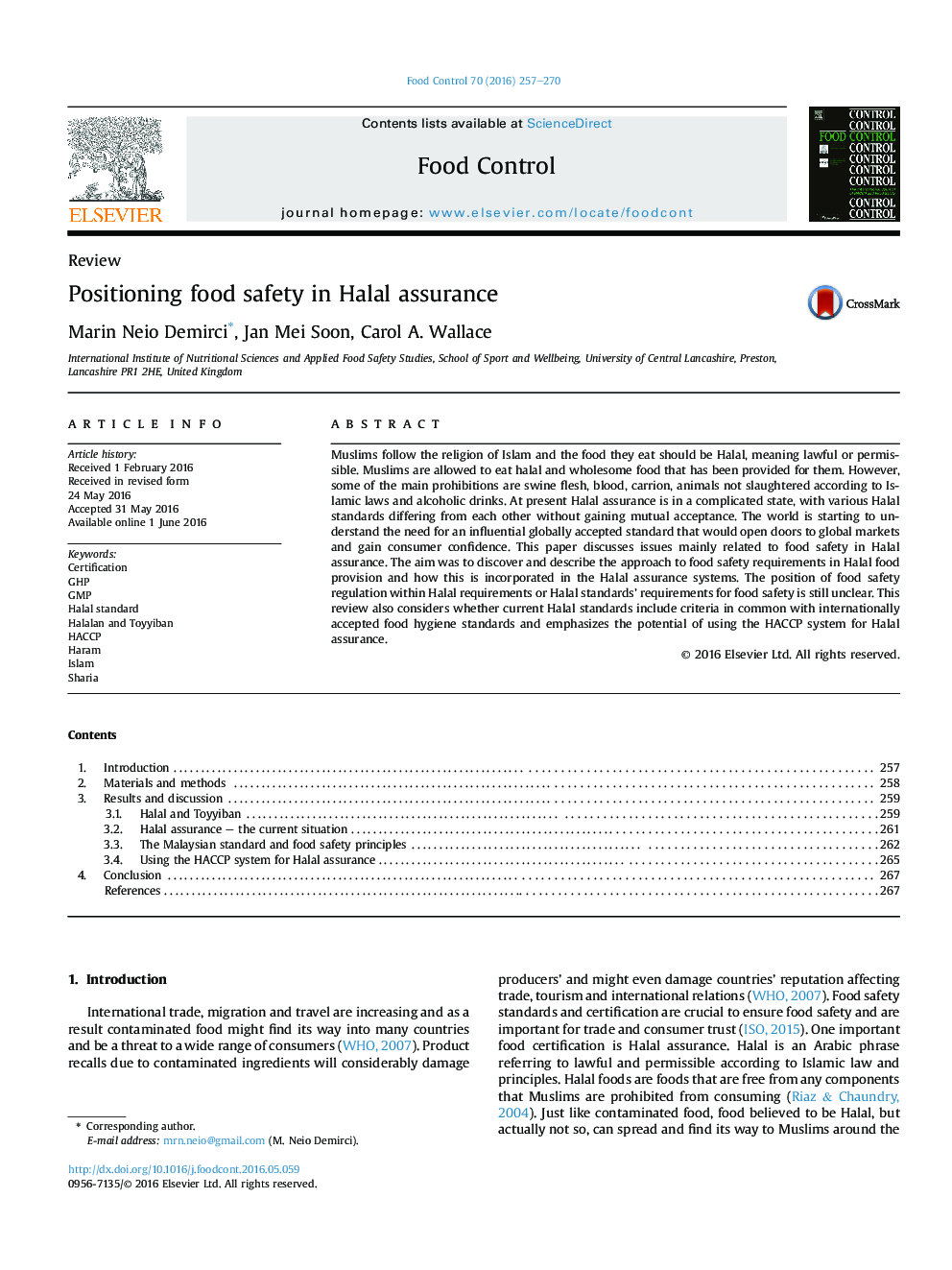| کد مقاله | کد نشریه | سال انتشار | مقاله انگلیسی | نسخه تمام متن |
|---|---|---|---|---|
| 4558995 | 1628392 | 2016 | 14 صفحه PDF | دانلود رایگان |

• Food safety regulation is ambiguous in Halal assurance activities.
• Explores the halal, toyyiban and haram concepts with reference to food safety.
• Compares Codex General Principles of Food Hygiene with the Malaysian Standard MS 1500:2009.
• Usage of HACCP in Halal assurance is explored.
• Calls for harmonization of Halal assurance standards including food safety requirements.
Muslims follow the religion of Islam and the food they eat should be Halal, meaning lawful or permissible. Muslims are allowed to eat halal and wholesome food that has been provided for them. However, some of the main prohibitions are swine flesh, blood, carrion, animals not slaughtered according to Islamic laws and alcoholic drinks. At present Halal assurance is in a complicated state, with various Halal standards differing from each other without gaining mutual acceptance. The world is starting to understand the need for an influential globally accepted standard that would open doors to global markets and gain consumer confidence. This paper discusses issues mainly related to food safety in Halal assurance. The aim was to discover and describe the approach to food safety requirements in Halal food provision and how this is incorporated in the Halal assurance systems. The position of food safety regulation within Halal requirements or Halal standards’ requirements for food safety is still unclear. This review also considers whether current Halal standards include criteria in common with internationally accepted food hygiene standards and emphasizes the potential of using the HACCP system for Halal assurance.
Journal: Food Control - Volume 70, December 2016, Pages 257–270